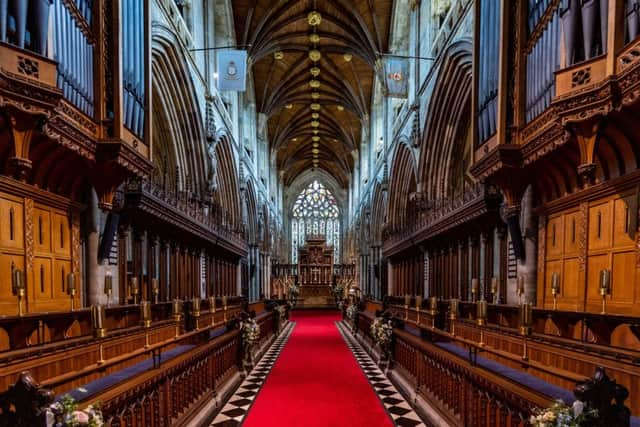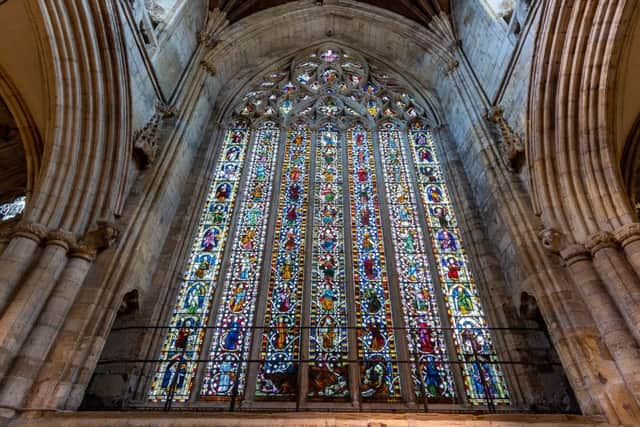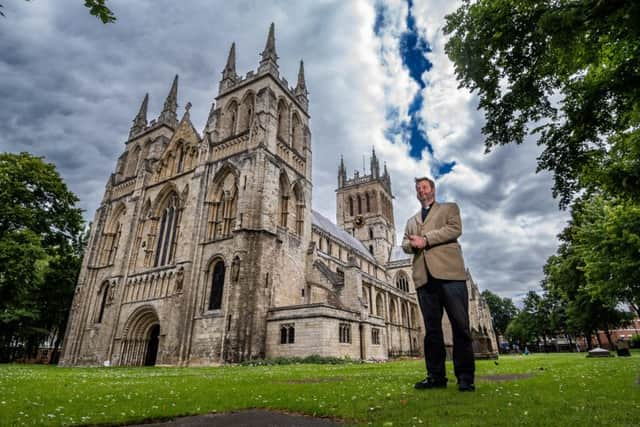These are the events that will mark the 950th anniversary of Selby Abbey
In 1069, just after the Norman Conquest, this corner of Yorkshire had no abbey church, no colossal towers reaching upwards, nothing to disturb the horizon in the flatlands around the Ouse. But that was the year in which Benedict, a monk from Auxerre in France, arrived here. Benedict had a mission to found a new monastery, an order of monks who would follow a life of piety and penance. Remarkably enough, he had been presented with this duty in a vision from St Germain, who instructed him to found the abbey at Selby, in distant Yorkshire. And now, 950 years later, the abbey and the town are gearing up to celebrate this remarkable story.
At the heart of the celebrations a great parade is planned, an event which aims to reconnect local people with history and legend from deep in the medieval past. Bev Adams, the organiser behind the parade, explains how she plans to achieve this. “It’s going to be a fun, light-hearted, accessible interpretation,” she enthuses. “Lots of participants will be needed to create a kind of living storyboard. A big feature will be Benedict, the French monk, who was inspired by his vision of St Germain to found an abbey here.
Advertisement
Hide AdAdvertisement
Hide Ad“But he had such a difficult job ahead! Firstly, St Germain had stipulated that he must found the abbey at a spot where three swans appeared. He had a notion it should be in the region of Selby, but by some mischance he went to Salisbury first! Benedict carried with him the finger of St Germain, a sacred relic which would give his plan to create an abbey with its church and community of monks a bit of credibility. He had all sorts of adventures on the way, and the parade will try to illustrate them with banners and 10ft-high puppets of Benedict and his swans.”


The parade certainly has a lot to fit in. But then, the abbey has had a very chequered history. Henry VIII expelled the monks, the tower collapsed, and a fire nearly destroyed the building. All this, plus the arrival of the mining industry and the Selby shipyard, will be featured. Local groups and schools will join in, even the local Zumba class.
“As well as the parade, a Living History Day will take place, with historic re-enactments, archery, arts and crafts,” Bev says. “But the centrepiece of the whole celebration, the feature which will lead the procession and really catch the eye – that’s the new icon of St Germain.”
This icon promises to balance the cheerful spontaneity of the parade with something much more spiritual. Icons – devotional portraits of religious figures – have been used for centuries by the Orthodox churches of Greece and Russia, but in England they are something of a rarity. Canon John Weetman, the priest of Selby Abbey, talks about this newly commissioned icon of St Germain. “The icon will help reconnect us to the pilgrimage days of the Middle Ages,” he says. “Selby was once a magnet for pilgrims who were drawn by the fact that we possessed a relic of St Germain, so they came here in great numbers. But all that culture was lost. We now don’t know where in the abbey the shrine of the saint was, or what happened to the relic. But an icon of St Germain will help us focus on the abbey’s patron saint and help us make contact again with our early history.”
Advertisement
Hide AdAdvertisement
Hide AdThe dedication to St Germain is perhaps a happy one for the abbey, as the historic figure of Germain was always somewhat controversial and anti-establishment, a man more at home with the ordinary folk than the great and the good. Germain took the command to look after those less fortunate entirely seriously, distributing goods among the poor and petitioning those in authority for leniency towards the common people. And Germain certainly didn’t care who he fell out with, denouncing establishment figures for their worldly ways. Moreover, he visited Britain from his native France and established strong links with the population. He certainly seems a person whose ideas might resonate in our own age. But how to capture the complexity of the man in an icon?


Aidan Hart, a professional icon painter and the man behind the new image of Germain, outlines his methods. “An icon,” he explains, “is a door to the saints. In the world of faith, the saints aren’t just people from history but they are alive now, and the icon is an attempt to open that door to them. The eyes are hugely important, of course. But also the way light is treated. The light shouldn’t be falling from a particular direction; instead, it needs to be coming from within the saint, so he or she is bathed in it. This gives a feeling for the saint’s tremendous inner power. Icon painting is a form of prayer, only we are praying with paint instead of words.”
But isn’t an icon a little un-English? “Not at all,” says Aidan. “The Venerable Bede believed in the power of images. St Augustine brought images with him when he arrived in England. The British Museum even has a fourth century mosaic floor from a house church in Dorset, and frescoes from another, in Kent. Icons were very much part of the early church’s life. Of course, the Protestant Reformation was sceptical of images. But things are changing. Nowadays I get commissions from Anglicans and even Methodists, as well as from Orthodox and Catholics. People are being drawn to the icon tradition.”
Aidan’s icon of St Germain is certainly special. Great trouble has been taken to get the details right. “The hand giving a blessing is very symbolic,” Aidan reveals. “The thumb and the two fingers coming together represent the Trinity. Germain’s robes echo what we know about priestly robes in the fifth century, when Germain was an abbot.
Advertisement
Hide AdAdvertisement
Hide Ad“The very creation of an icon reflects our proper relation with the material world – the pigment represents the mineral kingdom, the wooden panel the vegetable kingdom, and the egg yolk that binds the pigment represents the animal kingdom. The process of painting an icon is deeply ecological. It shows the harmony of creation.”


As cheerful irreverence and deep spirituality march side by side through the streets of Selby this summer, that vision of harmonious balance might well come true. What seems likely is that the figure of St Germain, defier of authority and champion of the underdog, will resonate with the sympathies of modern-day folk.
Germain’s icon, carried in procession through the town, will also recall the days when Selby and its shrine to the saint was the destination for many a foot-sore pilgrim.
It seems an appropriate way to mark the nine and a half centuries since Benedict, inspired by Germain’s vision, first arrived here and foresaw an elegant limestone abbey rising from the floodplain of the Ouse.
The St Germain Parade and Living History Day take place in Selby on July 31. Details can be found at: www.selbyabbey.org.uk.